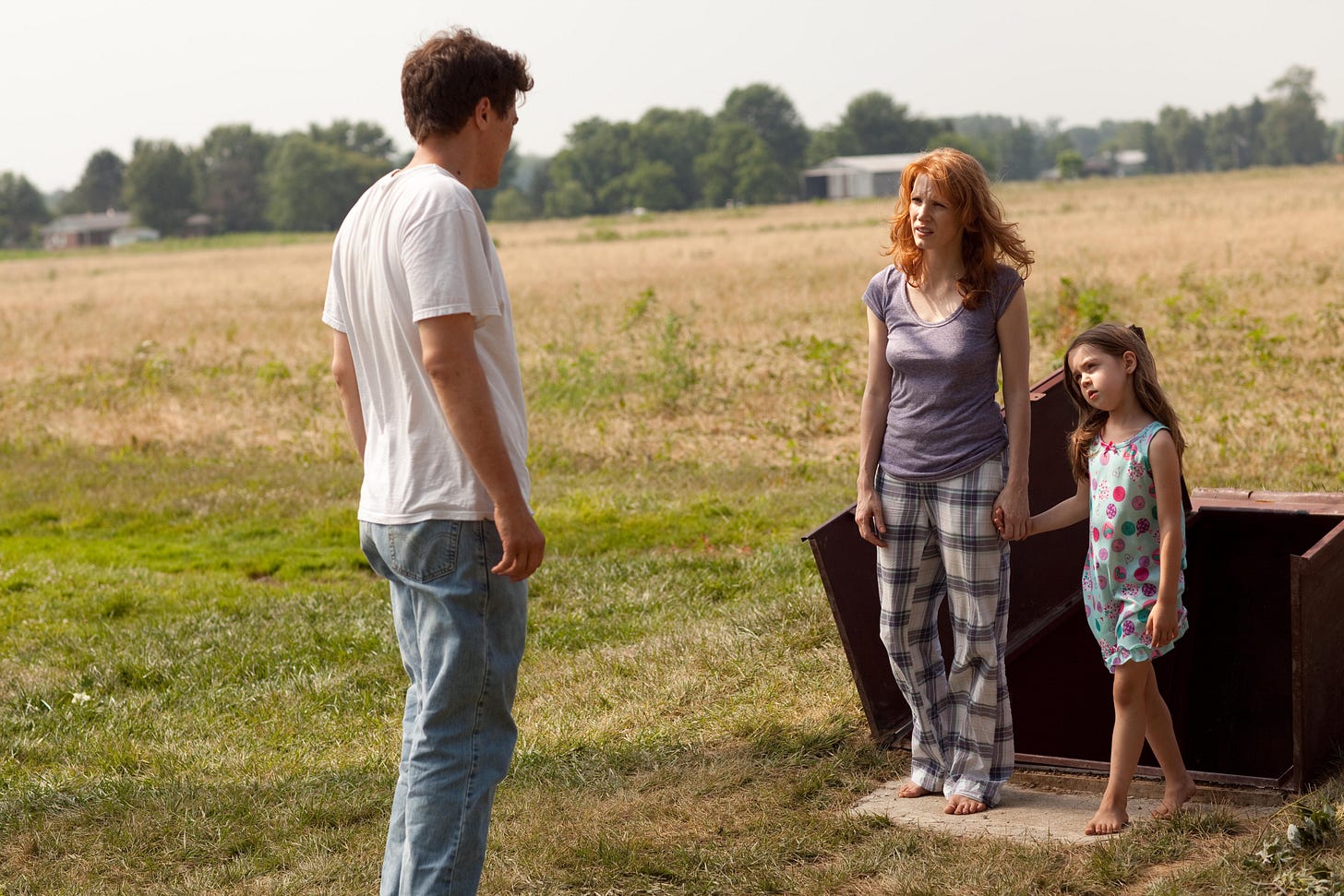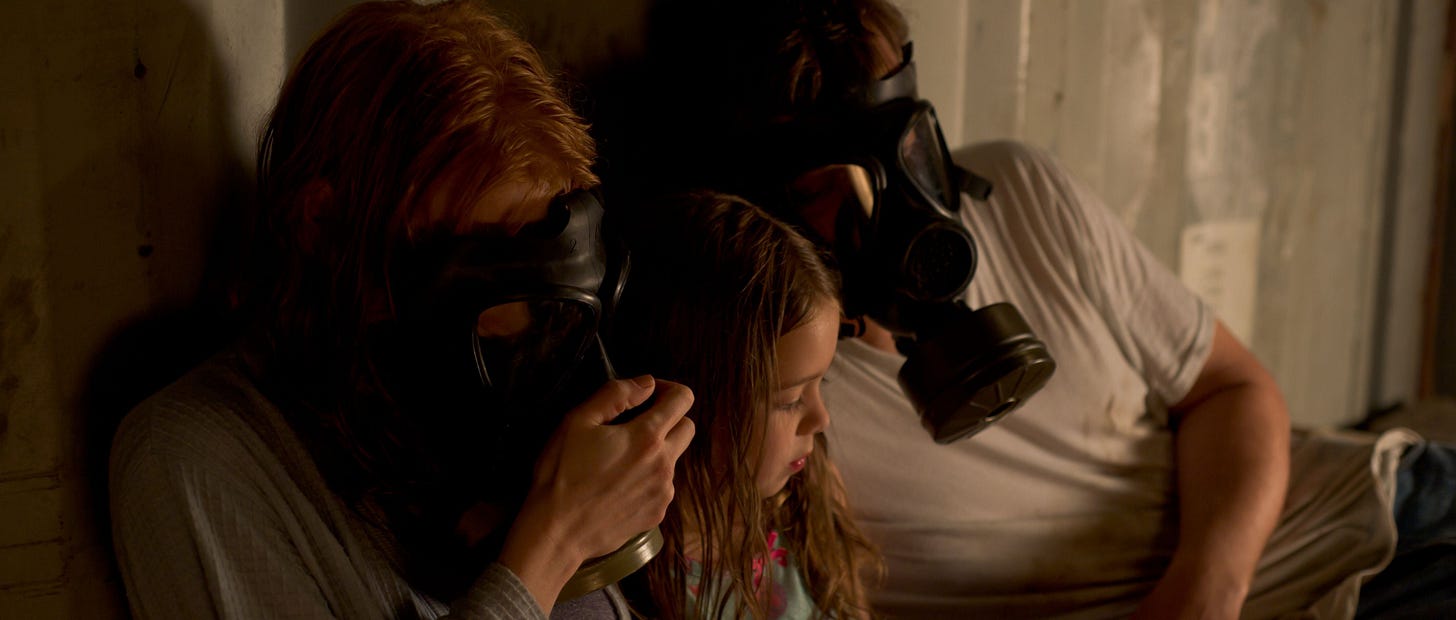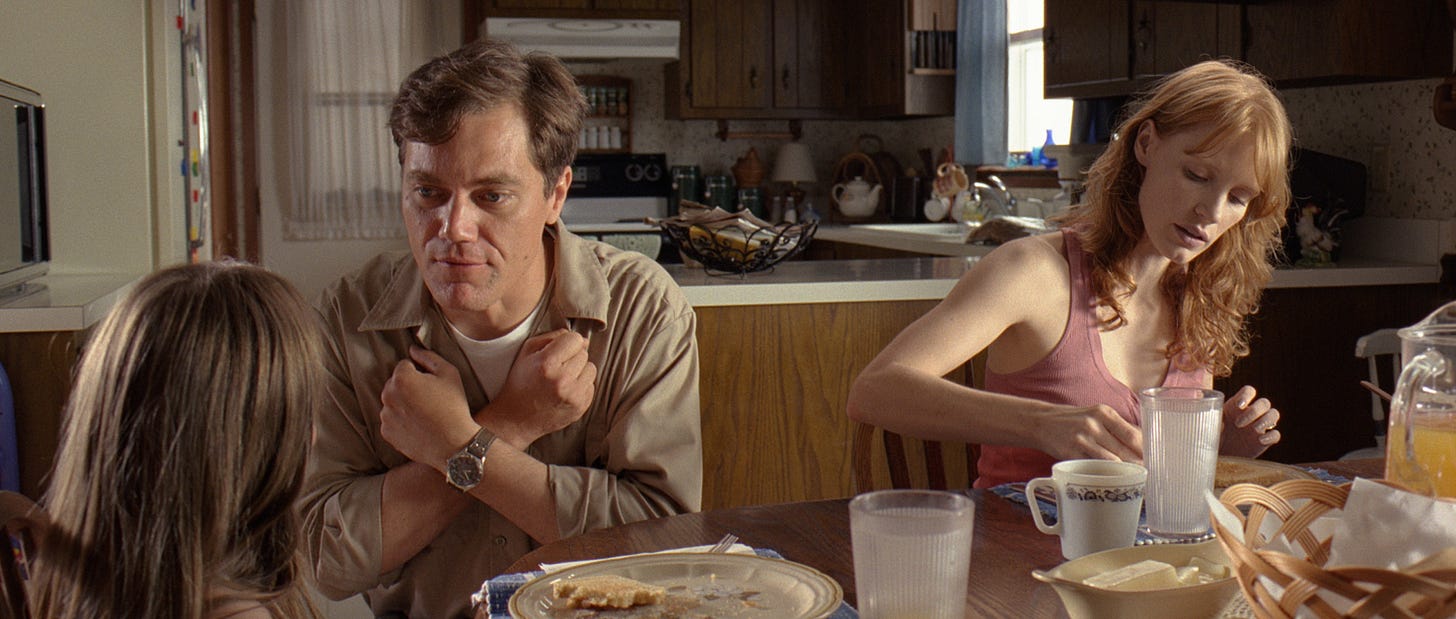Spoilers for Take Shelter (2011). Trigger warnings for discussions of mental health disorders.
For the bulk of Jeff Nichols’ 2011 psychological thriller Take Shelter, the audience is left to come to their own conclusions about the visions afflicting Curtis (Michael Shannon). Are they a glimpse at an apocalyptic event that is about to ravage the small town, or are they symptoms of undiagnosed paranoid schizophrenia?
Shannon is excellent as the blue-collar family man who risks estranging himself from his wife Samantha (Jessica Chastain) and daughter Hannah (Tova Stewart), and the rest of the community as he prepares for the coming storm. He is unsure about the cause of his visions and constantly questions himself, while at the same time running through savings and building debt to improve the storm shelter at the back of his house.
Nicols, who also wrote the script, keeps things ambiguous by basing the story in Ohio – a state that, while not having the highest number of tornados per year, has seen over 1,400 between 1950 and 2023. This means that when a storm does hit towards the end of the film, the audience is still able to question whether Curtis has had visions of the apocalypse, or whether it is a tragic coincidence that his mental health has deteriorated at the same time as a tornado hits.
Had the film ended when Curtis, Samantha and Hannah exit the shelter – their encouragement and support giving him the strength to face his fears head-on – Take Shelter would have kept that ambiguity and been more powerful for it. It would have also highlighted the importance of supporting those afflicted with a mental disorder.
Instead, Take Shelter comes with a sting in the tail. After surveying the damage caused by a very real tornado, Curtis agrees to see a psychiatrist, who suggests a period of care in a facility but agrees to the family going on vacation first. While playing on the beach, Hannah (who is deaf) signs to Curtis that a storm is coming.
Even at this point, with Curtis’ concerns that his diagnosis may have passed down from his mother, the film does not fall apart. Studies have suggested that schizophrenia could be heritable, and while suggesting that Hannah also has the disorder would undo much of the subtlety throughout the film, it is at least consistent.
However, when Samantha leaves the beach house and sees the oncoming storm, everything that Nichols has achieved in the film falls apart. There are only two possible ways that this ending could be satisfying; one is that Curtis does not have a disorder, and his visions have been a warning; the other is that Curtis is currently having a vision, essentially boiling the ending of the film down to ‘it was just a dream.’
For a film that allows the audience to question character motivations, neither of these endings fit. Nicols has said that the only thing that matters in that final scene is that the family is together and that Samantha and Hannah believe Curtis. This acceptance is an important theme in Take Shelter, but one that had already been highlighted in a much more narratively fitting way.
Back in the storm shelter, they first convince Curtis to take off his gas mask and then to go outside. They show that he has their support, regardless of what is outside. It indicates that even when he is at his worst, his family will be there for him. For him to be proven right in the closing moments, lessens this message. Of course, the family are going to huddle together as the apocalypse touches down.
Mental health support is not being there when things are bad, it’s being there when things seem okay to the outside world, but one person is dealing with a storm.
By tacking on that final scene, Nichols emphasises some aspects of Take Shelter but to the detriment of the film.
Writer/director: Jeff Nicols
Starring: Michael Shannon, Jessica Chastain, Tova Stewart









